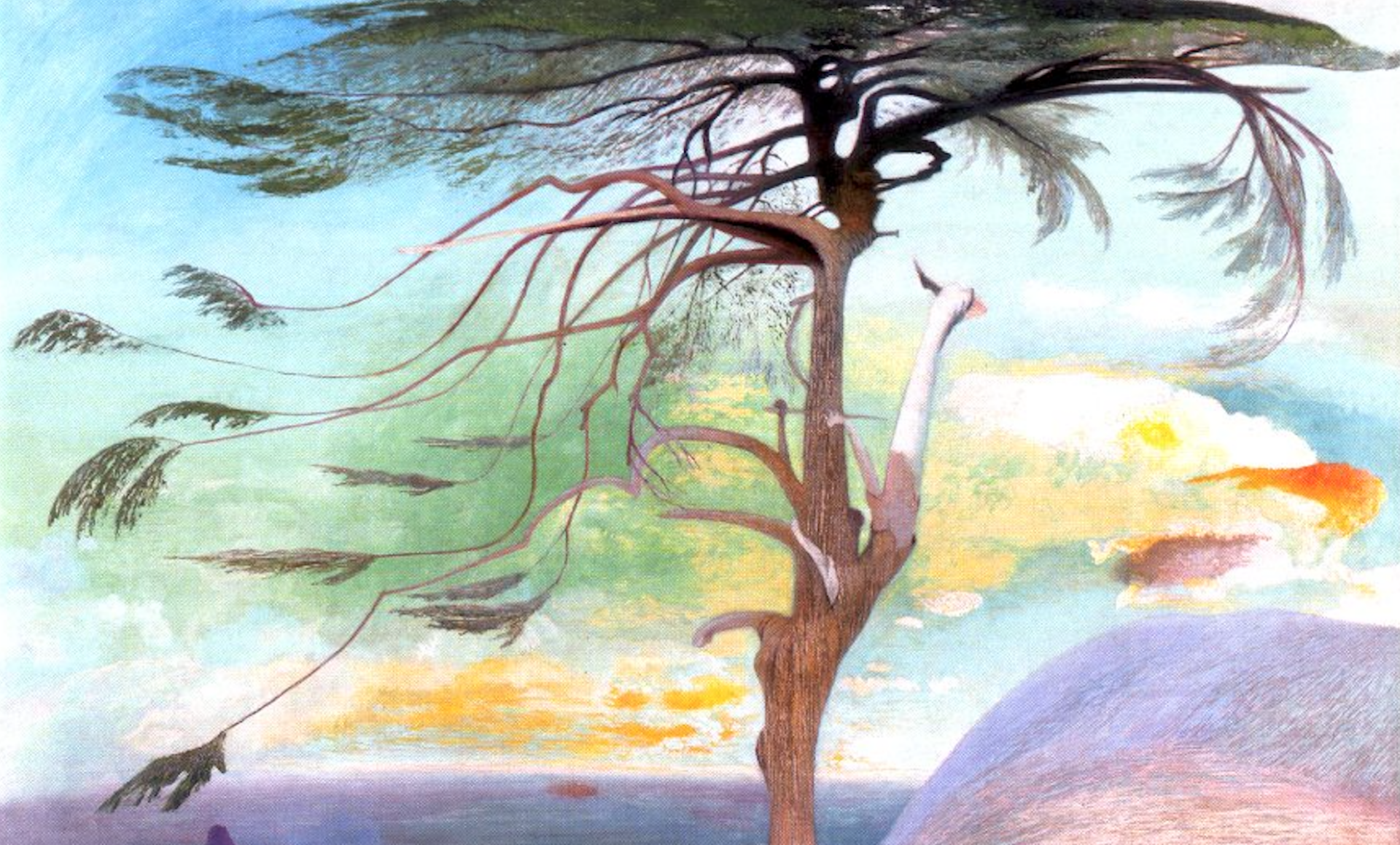Tivadar Csontváry Kosztka (5 July 1853 – 20 June 1919) is now recognized as one of the greatest Hungarian painters who ever lived. The artist’s work, however, was discovered only a decade after he died in poverty. As a young man, following in the footsteps of his father, Csontváry learned to be a pharmacist. After studying in medical school in Pest, he took up a job worked in a pharmacy. According to a popular myth he was in the pharmacy on 13 October 1880 when he made a pencil sketch of a bullock cart on the back of a prescription. His employer who liked the drawing jokingly said to him that he was born to be a painter—at that moment, Csontváry heard a heavenly voice saying, ‘You are going to be the greatest painter of the world, greater than Raphael!’ Csontváry believed in the calling and sent his drawing of the bullock cart to a painter school in Pest. He was rejected and recommended to remain a pharmacist, as his living would be more secure that way than being a painter.
The rejection did not discourage him, however, and he set out for Rome to see Raffaello’s paintings. He was not impressed by Raffaello’s art, and he indeed believed that he can be a greater painter than the old master. During his trip,
Csontváry formulated the principles of a painting style radically different from what he witnessed in Italy.
He did not have the money, however, to start painting and finance his study and painting trips. To collect the money, he started to work as a pharmacist. In the next 20 years, Csontváry never lost sight of his end goal—to become a painter. Eventually he could start dedicating himself to improving his painting skills only when he was 41 years old. The inner confidence that kept Csontváry going from his mid-20s when he heard the transcendent voice, until his early 40s when he could actually start painting left a distinctive mark on his art—he was so confident that he never signed any of his paintings, and yet his admirers would recognize the signs of his paintbrush on the canvas immediately.
When Csontváry finally collected enough money to start his artistic journey in his 40s, he first studied in Budapest and then in Germany. Among many other places he visited Switzerland, Rome, Naples and Pompei to collect inspirations for his paintings. His trips inspired him to paint the Panorama of Selmecbánya, Springtime in Mostar and the Ruins of the Ancient Greek Theatre at Taormina. He was especially interested in nature and painting the colours of day and night lights which inspired many of his paintings including the Waterfall at Jajce. His two most famous paintings were probably inspired by his trips to the Middle East—both the Pilgrimage to the Cedars in Lebanon and The Lonely Cedar were painted in 1907. While his paintings are usually described as belonging to Hungarian impressionism, he himself described his style and artistic journey as the ‘sunway’ (napút). The Hungarian word was created by him, but the way he used the phrase resembles the French en plein air concept. The emphasis on the sun demonstrates his interest in the lights and colours that illuminate the air during the daytime and at night.
While his paintings are breathtakingly beautiful, he received no recognition whatsoever for his art while he was alive.
In 1910, he tried to organize an exhibition, but he failed. He never allowed any of his artworks to be sold during his lifetime. The start of World War I bankrupted his business and from 1915 his health started to rapidly deteriorate. In 1916 he participated in the coronation of Charles IV of Hungary, but he could never paint the event due to his worsening health condition. In 1917 he was forced to sell his pharmacy and died in poverty two years later, in 1919. After his death, the unknown artist’s paintings were saved by a young architect, Gedeon Gerlóczy, who recognized the exceptionality of the oeuvre. Csontváry’s art did not gain recognition until the exhibition of his works in 1930, but since then he has been considered one of the greatest Hungarian painters who ever lived.
My favourite painting 'Old Fisherman’; artist- Tivadar Csontvary Kosztka
— Rafayet Ratul (@RatulRafayet) September 19, 2018
Every Human has a equal good and evil side. pic.twitter.com/jaepio6Onj








